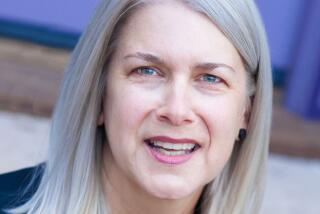Review: The climate change documentary ‘Time to Choose’ is an urgent, hopeful plea
You may feel, what with 2006’s “An Inconvenient Truth” and the wave of films that came after it, that another documentary about climate change is not something that needs be high on your viewing list. But you just might be wrong.
Because “Time To Choose” is directed and co-written by Charles Ferguson, a documentarian with a formidable track record. His “No End In Sight,” a prescient look at what we did in country after we invaded Iraq, was nominated for an Oscar, and his next film, “Inside Job,” won the award for its impassioned dissection of 2008’s global economic crisis. When he makes a film, people tend to pay attention.
That’s in part because Ferguson’s modus operandi is to carefully and cogently lay out all the elements of a situation, clearing away the underbrush so that what’s significant can emerge from the shadows.
With “Time To Choose,” however, Ferguson’s tone is not so much outrage as hope. Yes, he is angry at the persistence of practices that he harbors no doubts have put our planet at risk, but this is not a film that leaves you in hand-wringing despair. Rather it is unapologetically on the optimistic side, telling us in no uncertain terms that “we can stop climate change.”
Before we get to the stopping part, however, Ferguson and his co-writer and editor Chad Beck briskly lay out the damage that will result if we don’t stop releasing greenhouse gases that are relentlessly raising the temperature of our planet.
Among other things, the Himalayan glaciers that supply massive amounts of drinking water will go away, the coral reefs that support aquatic life will die along with that major food source, and the Greenland ice sheets will melt, causing global flooding that will submerge many of the world’s major cities.
Says Steven Chu, the Nobel Prize-winning former U.S. Energy secretary (one of the film’s numerous high profile interviewees also including Dr. Jane Goodall and Gov. Jerry Brown), “most of Earth’s citizens don’t grasp what’s going on.” And by the middle of this century, stopping it will be beyond human control.
But, as noted, most of “Time To Choose” is concerned with demonstrating that, as more than one speaker says, every crisis is an opportunity. that for every human action that increases global warming there are already workable alternatives in place just waiting to be embraced by a wider constituency.
In terms of burning fossil fuel for energy, for instance, narrator Oscar Isaac tells us that solar can get the job done for less money. “During the making of this film,” type on the screen tells us, “something historic happened. Renewable energy became competitive with fossil fuel.”
Also potentially making a difference is smart urban design that focuses on convenient and affordable public transportation.
For proof, Ferguson whisks us off to Curtibia, Brazil and former Mayor Jaime Lerner, who pioneered a Bus Rapid Transit system, since copied in 180 other cities (including, to a limited extent, Los Angeles) that is as efficient as a subway and 50 times less expensive.
One of “Time To Choose’s” most involving segments concerns food production: writer Michael Pollan and others walk us through the enormous amount of land and energy it takes to raise animals intended for human consumption.
Though Ferguson and Beck throw considerable information at us via type on screen (Emily Searles gets a research credit), “Time To Choose” is noteworthy because its numerous cinematographers (including eight aerial cinematography credits alone) are quite good at creating satisfying images of the natural world that may be going away.
It’s not just pretty pictures, however. In Indonesia, for example, covert and frankly illegal aerial photography reveals the extent to which the government is not protecting the country’s peat lands, which store as much carbon as the rest of the world combined. “Time to Choose” may insist that we can stop the madness, but it never says it’s going to be easy.
===
No MPAA rating. Running time: 1 hour, 37 minutes. Playing Laemmle’s Royal, West Los Angeles.
“Time To Change.” Oscar-winning documentarian Charles Ferguson is furious at global warming but this is not a film that leaves you in hand-wringing despair. It’s unapologetically on the optimistic side, telling us in no uncertain terms that “we can stop climate change.” - Kenneth Turan
More to Read
Only good movies
Get the Indie Focus newsletter, Mark Olsen's weekly guide to the world of cinema.
You may occasionally receive promotional content from the Los Angeles Times.







